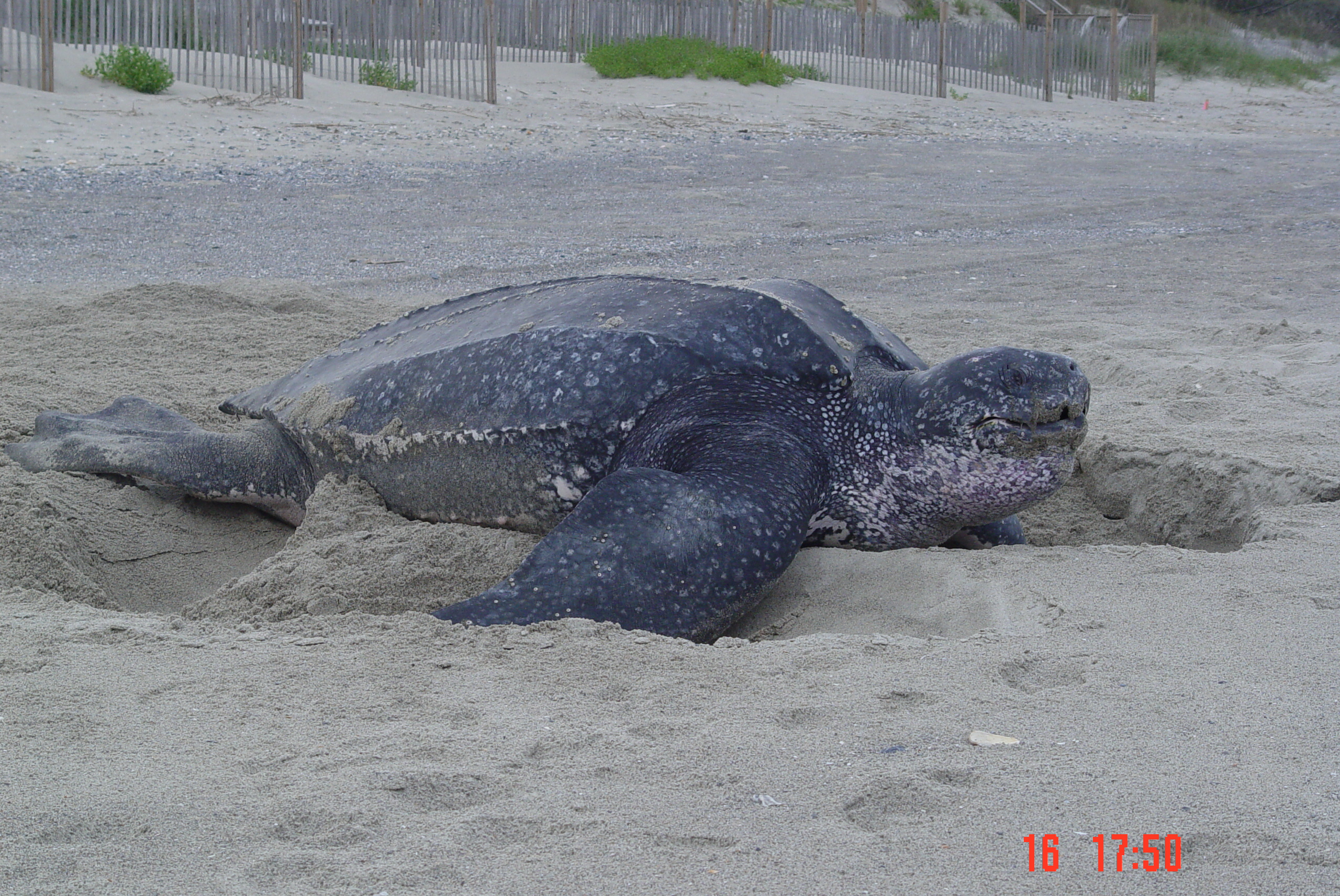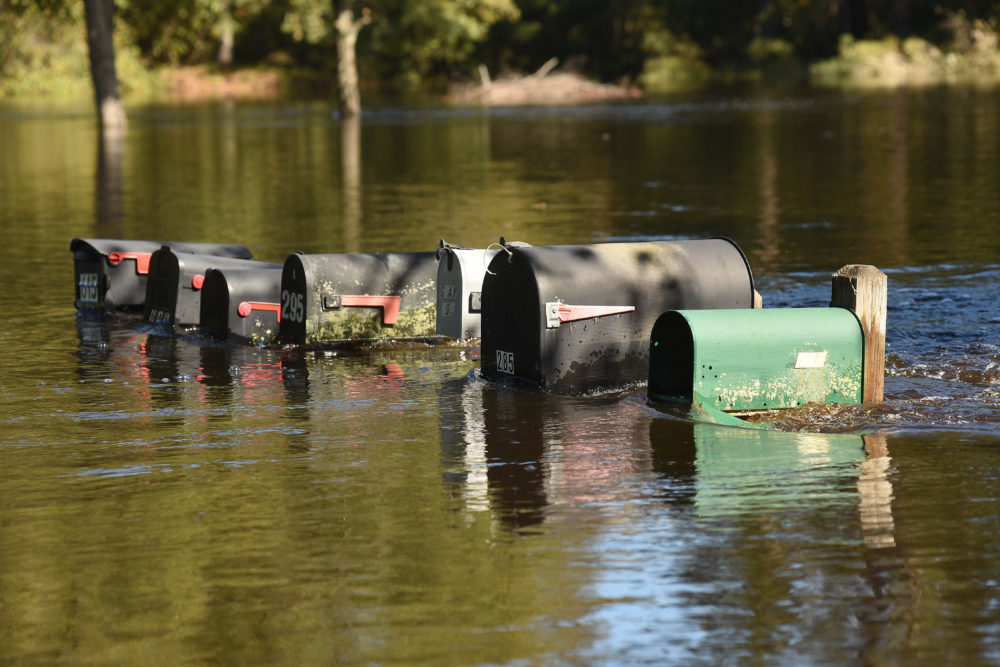Research Responds to Key Challenges
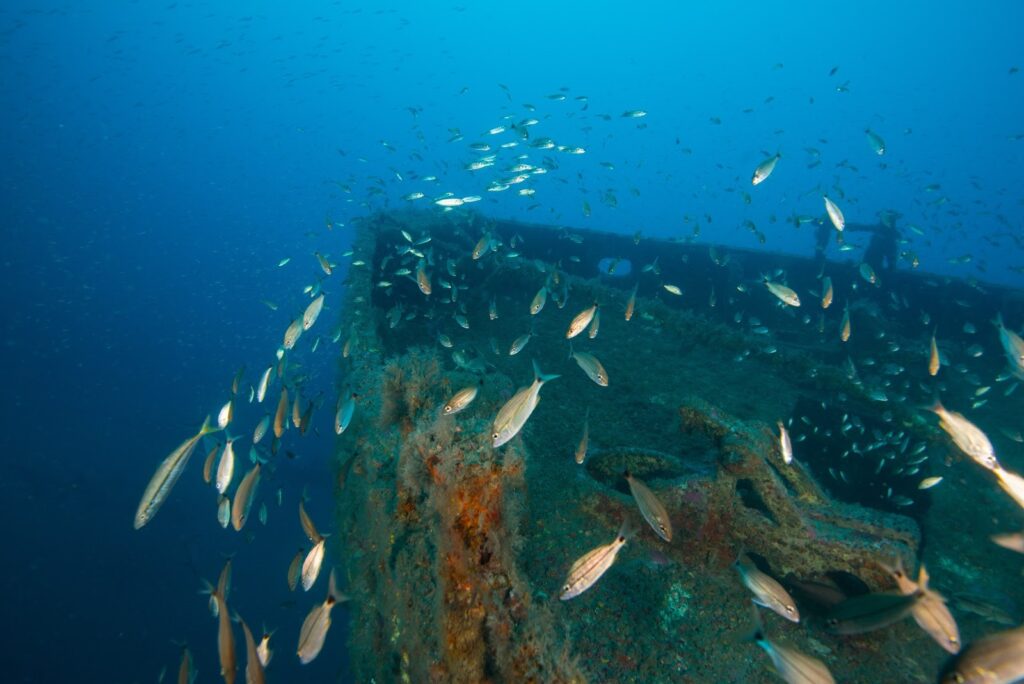
Hurricane recovery, science literacy, oyster reefs and aquaculture — these are among the topics of interest spanning 10 new North Carolina Sea Grant 2018 to 2020 core research projects. Research teams will apply often novel approaches to address coastal issues creatively and efficiently.
“We are looking forward to how these innovative studies will examine various real-world needs along our coast,” says Susan White, North Carolina Sea Grant’s executive director. “These two-year projects are considered our core research to complement the organization’s major focus areas.”
The new projects include researchers from five campuses in the state: East Carolina University, North Carolina State University, the University of North Carolina at Chapel Hill, UNC Wilmington and Duke University.
Four of the projects feature collaborations with researchers at other universities and partners, such as the National Oceanic and Atmospheric Administration lab in Beaufort and Stanford University. Eight of the projects include student support. All provide training opportunities.
NOAA funds these projects through the National Sea Grant College Program, along with state funding through the University of North Carolina system. Each project also includes matching funds from the respective university.
COORDINATING COMMUNITY RESILIENCE

Building Resilience by Innovating through Diverse Group Engagement: Long-Term Recovery from Hurricane Matthew; Bethany Cutts of NC State.
Robeson County is still feeling the effects of Hurricane Matthew, which struck in fall 2016. The county grapples with persistent poverty, and experienced record-breaking high-water marks during the storm. To explore how Robeson residents perceive the relationship between coastal hazards and resilience, researchers will develop a comprehensive “community voice” framework that builds upon interviews, mapping and public videos.
“This project is full of stories of hard work and hope,” says Bethany Cutts, a social scientist in NC State’s Department of Parks, Recreation, and Tourism Management. “Even our early efforts to launch a photo booth as part of community events have allowed us to learn a lot about the strength and creativity of disaster survivors.”
Results will be shared with residents and local decision-makers, including Lumbee tribal leaders, recovery professionals, city planners and community-based organizations. Long-term, the team will continue empowering small museums, libraries and cultural centers to document recovery experiences and share the information to many audiences.
“Community members in Lumberton and Robeson County are working every day to create a more resilient future,” Cutts says. “They are looking to find ways to connect with other locations to share knowledge, experiences and strategies to create meaningful change in the ways humans interact with their local environment.”
EXPLORING OYSTER REEFS
Evaluating Cultch Oyster Reefs as Essential Fish Habitat; David Eggleston of NC State.
With historically low oyster populations, reef restoration efforts have increased globally. In North Carolina, these habitats also provide important health benefits for the ecosystem, such as removing excess nutrients, stabilizing shorelines and creating essential fish habitat.
A team from NC State will look at cultch, or the mass of broken shells and grit on which an oyster bed is formed. Reefs formed from cultch not only increase commercial oyster harvests, but also support fish species such as black sea bass, gag grouper, sheepshead, weakfish, red drum and tarpon.
“We know that planting of cultch materials on the estuarine bottom by the N.C. Division of Marine Fisheries has a positive effect on oyster populations by providing a place for larvae to settle and grow, with subsequent harvest by fishermen when oysters reach a legal size,” says David Eggleston, a marine ecologist who also leads NC State’s Center for Marine Sciences and Technology.
“With funding from Sea Grant, we’re excited to determine how the planting of structurally complex cultch materials will provide important habitat for recently juvenile fish, as well as larger predatory fish that may use these cultch oyster reefs as foraging areas.”
By partnering with state fisheries officials, the team will share the research results with management experts. The data also will be a key element for an educational website.
UNDERSTANDING SHORELINE MANAGEMENT
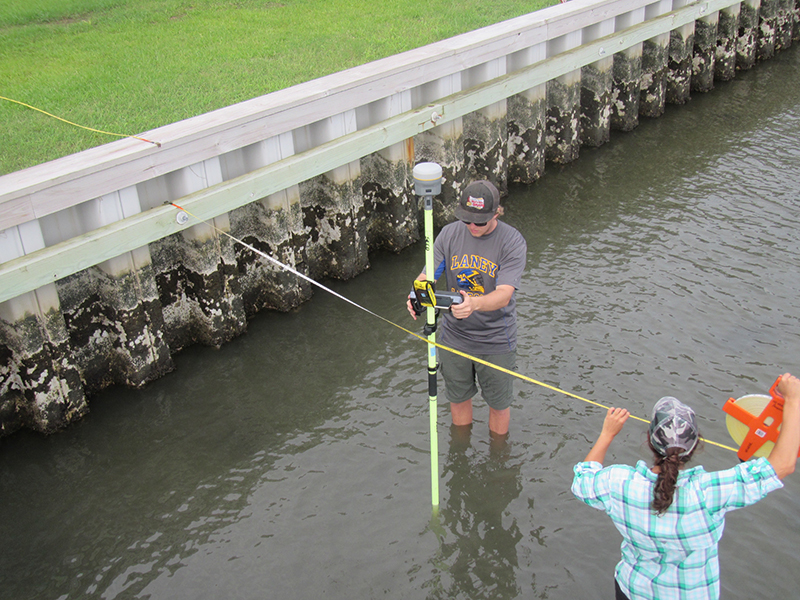
Quantifying the Geomorphic, Ecological, and Socioeconomic Impacts of Shoreline Management Strategies: A Multidisciplinary Approach; Devon Eulie of UNCW; with Rachel Gittman of ECU and Charles Peterson of UNC-CH.
As natural and human pressures continue to affect estuarine shoreline habitats, understanding both the temporal and spatial causes is vital. By using a multidisciplinary research approach, a team representing three universities will assess long-term patterns of change in shoreline and habitats, as well as socio-ecological factors influencing those changes.
“The project team is excited to work on such a collaborative, interdisciplinary study that will enhance our understanding of the impacts on estuarine shoreline habitats,” says Devon Eulie, a coastal resource management expert in the UNCW Department of Environmental Sciences and leader of UNCW’s Coastal and Estuarine Studies Lab. “We look forward to working with citizens and other stakeholders throughout the project.”
The team will develop and test a citizen-science based approach for future shoreline monitoring. The results will help educate homeowners on shoreline conservation and management, which could lead to long-term change at the state and regional levels.
SURVEYING RIVER HERRING
Quantifying Spawning Populations of River Herring Using Environmental DNA; Erin Field of ECU; with Michael Brewer and Roger Rulifson, also of ECU.
River herring, prey for commercial and recreational fish species, is in decline. Using cutting-edge eDNA surveying methods, researchers from ECU will build on an earlier pilot study and continue to analyze N.C. spawning habitats for river herring.
The team will develop a two-week, field-based fisheries quantification course to provide ECU students hands-on experience with traditional and innovative eDNA surveying methods for river herring. In addition, researchers will also develop a citizen-science network for K-12 schools and community colleges to aid in sample collection during the spawning season, thus building a repository of eDNA samples from across eastern North Carolina.
Erin Field, a biologist at ECU, says these results will be compared to the results of collaborators across the Mid-Atlantic region to better assess the current river herring stock along the East Coast. “We are thrilled to begin this project, as we have the opportunity to work with so many amazing scientists, students, and community members to develop a fast and accurate way to monitor this important fishery in North Carolina and ultimately aid in its recovery.
OBSERVING OYSTER-LEASE HABITATS
Habitat Value of Oyster Leases within Estuarine Landscapes for Finfish and Crustaceans; Joel Fodrie of UNC-CH; with James Morley and Abigail Poray, also of UNC-CH. Christopher Taylor of NOAA Ocean Service also will participate.
As marine aquaculture — and especially oyster production — increases in North Carolina, effects of these mariculture habitats on fish and crustaceans are unclear. To learn more, researchers will survey commercial oyster leases known as “bottom leases” and surrounding landscapes to record data that will be used to create descriptive models of fish density and biomass. By studying leases and the surrounding areas, researchers can monitor residency patterns of fish and crustaceans.
“Our preliminary results show that fish and shellfish are using leased bottom, but the species composition differs when compared to adjacent undisturbed habitats,” says James Morley, an ecologist at UNC-CH. “Some desirable species that appear to aggregate towards culture gear include juvenile gag grouper and sheepshead.”
The scientists will extend an ongoing field experiment in the Pamlico Sound that is examining how seagrass communities respond to the establishment of oyster culture gear. Overall, the project will help determine the effect of commercial oyster leases on fisheries habitats within an estuarine landscape.
DIAGNOSING HEALTHY OYSTERS
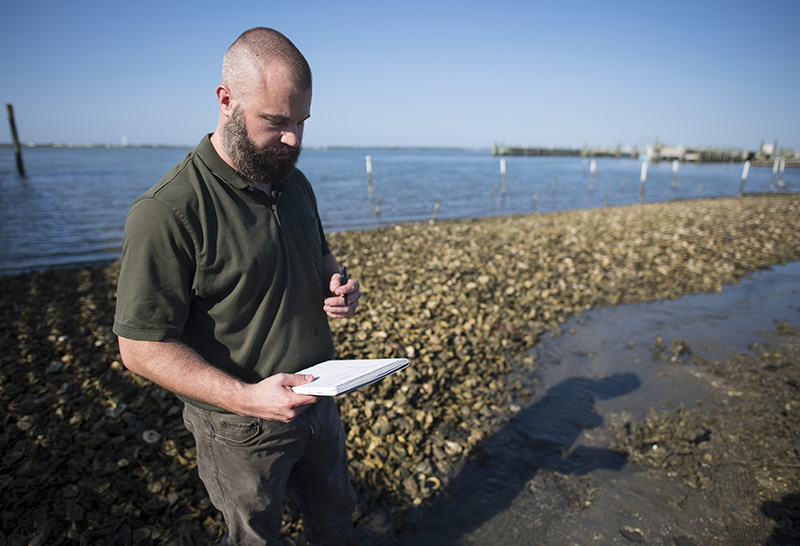
Characterizing and Manipulating Oyster Microbiology for Aquaculture Applications; Brett Froelich of UNC-CH; with Rachel Noble, also of UNC-CH.
As the demand for oysters continues to rise in North Carolina, risks associated with consumption also are increasing. This project will test a new probiotic treatment, such as is currently used in human health practices.
Instead of treating oysters after they are harvested — a process that can alter the taste or even kill the oysters — the researchers propose a technique that will introduce non-harmful bacteria into young oysters. These added bacteria would prevent harmful bacteria from living inside the oysters. The technique could reduce oyster-related food-borne illness. Given the implications for your health, this study has the potential to shape global shellfish aquaculture, the team notes.
“While there is some risk of eating any raw animal product, through research we can ensure that raw oysters can be enjoyed with safety,” says Brett Froelich, a shellfish expert at the UNC-CH Institute of Marine Sciences. “Thank you to Sea Grant for providing this opportunity, through which we can hopefully provide a nutritious, delicious and safe product.”
STUDYING ATTITUDES ABOUT FISH
The Value of Fishing, Farming and Eating: New Approaches to Understanding Coastal Community Well-Being in a Changing World; Grant Murray, Lisa Campbell, and Luke Fairbanks of Duke; Linda D’Anna of the UNC Coastal Studies Institute; Joshua Stoll, University of Maine.
The integral role of commercial fishing in coastal communities, as well as the increase of aquaculture production in North Carolina, combine for varied impacts. A multi-campus team suggests that in order to make informed decisions about seafood production, citizens should understand economic impacts, as well as the values and attitudes associated with consuming seafood.
The researchers will implement a mixed-methods approach in the Down East area of Carteret County. By conducting interviews and surveys and analyzing documents, the team will be able to consider decisions of different audiences, such as managers, communities and academics.
“Producing and eating seafood is an important part of life in many coastal communities,” says Grant Murray, who focuses on marine policy at Duke. “But where our seafood is coming from is changing, and we’re working with local partners to better understand that change, and what it means for the well-being of North Carolina’s coastal communities.”
INSPECTING ESTUARINE WATERS
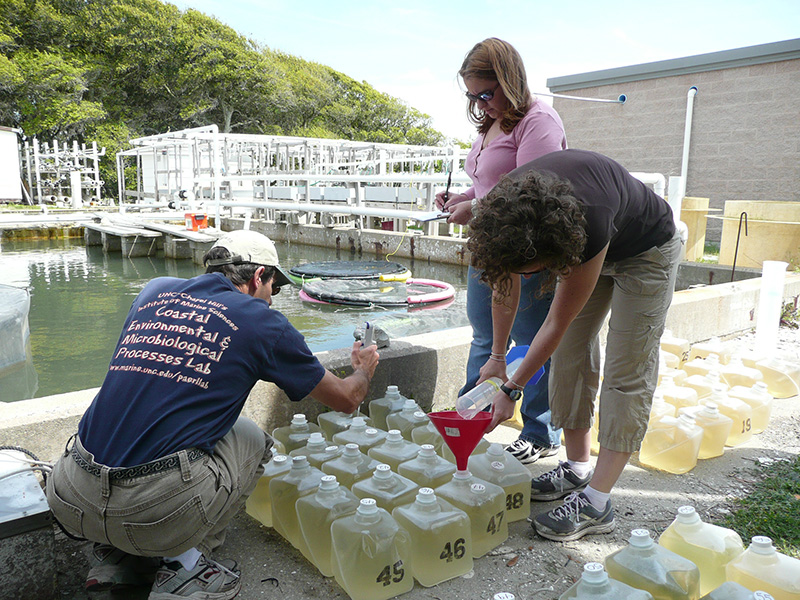
The Missing Link? The Role Dissolved Organic Nitrogen Plays in Controlling Phytoplankton and Eutrophication Dynamics in the Neuse River Estuary, NC; Hans Paerl of UNC-CH; with Christopher Osburn of NC State.
The Neuse River Estuary is the largest tributary of the Albemarle-Pamlico Sound, a vital fisheries nursery and habitat, as well as an important recreational and tourism resource and the site of increasing residential properties in North Carolina.
Agricultural and urban expansion have led to an increase in nitrogen loading to this estuary, promoting eutrophication, or excessive nutrients in a body of water. Associated negative impacts on water quality can include increases in harmful algal blooms and low-oxygen conditions, known as hypoxia, that threaten shellfish and finfish habitats. While improved wastewater treatment, the construction of riparian buffers and better fertilizer management have led to a decrease in inorganic nitrogen inputs, dissolved organic forms of nitrogen (DON) have increased.
“The observed increase in DON represents a new dimension and challenge to our understanding of how watershed-based nitrogen sources impact estuarine and coastal eutrophication,” says Hans Paerl, an environmental scientist at the UNC-CH Institute for Marine Sciences.
Utilizing Christopher Osburn’s ability to identify land-based sources of DON, Paerl’s group will focus on how this increase in DON loading affects the growth and composition of phytoplankton, the base of the Neuse River Estuary’s food web. The results will offer insight into how increased nitrogen in the Neuse River Estuary impacts the ecosystem and overall water quality. These results can then be applied to other similarly impacted estuarine and coastal ecosystems.
REVIEWING SALTMARSH RESILIENCE
Improving Saltmarsh Conservation by Examining Transgression Across a Range of Upland Gradients and Saltmarsh Widths at Decadal to Millennial Time Scales; Antonio Rodriguez of UNC-CH.
Saltmarshes work as buffers protecting inland developments from sea waves, but due to sea level rise, saltmarshes are diminishing globally. Antonio Rodriguez, a coastal geologist at the UNC-CH Institute of Marine Sciences, aims to determine rates of saltmarsh expansion into the forested upland, known as transgression. The research will focus on areas that reflect conditions related to increased storminess and accelerated sea level rise.
“Some of the best records of sea level rise and changes in storminess over the last 1,000 years are based on data from North Carolina,” Rodriguez says. “We’re complementing that previous work with contemporaneous records of saltmarsh landward expansion.”
By reconstructing transgression rates at 40 different N.C. coastal sites, the team will gain a better understanding of how to predict the phenomenon, and how to increase saltmarsh resistance to erosion.
Study results will be shared with scientists, coastal managers and restoration practitioners. In addition, the team will develop educational materials including lesson plans and a virtual field trip for grades 6 to 12.
EVALUATING ENVIRONMENTAL LITERACY

Improving Environmental Decision Making in Coastal Communities through Children: Building Science Literacy, Civic Engagement, and Coastal Resilience with K–12 Citizen Science; Kathryn Stevenson of NC State; with Howard Bondell, Sarah Carrier, M. Nils Peterson, K.C. Busch and Renee Strnad, all also of NC State; along with Elizabeth DeMattia of Duke.
Environmental literacy is vital to understanding and implementing scientific recommendations regarding coastal and estuarine ecosystems. Based on the team’s earlier research, K-12 students may not only improve environmental literacy in each other, but also in their parents.
Additionally, environmental literacy may extend from parents to local officials and larger communities.
Researchers from NC State will work with the Duke University Marine Lab to expand citizen science-based environmental education projects to 32 middle-school classrooms across the 20 counties included in the state’s Coastal Area Management Act.
The results will shed light on how this educational experience affects students’ understanding of the environmental challenges, as well as their awareness of career options. The data also will indicate how the knowledge gained by students ultimately affects decisions made by parents, local officials and community members.
“Environmental education typically focuses on training the next generation so we are prepared for the future,” says Kathryn Stevenson, who focuses on environmental education in her faculty position at NC State’s College of Natural Resources. “We also think that kids can take an active role in helping us respond to environmental challenges right now.”
As these projects unfold, watch North Carolina Sea Grant’s social media feeds on Twitter and Facebook, as well as the Coastwatch Currents blog at ncseagrant.org, and Coastwatch magazine in print and at nccoastwatch.org.
This article was published in the Summer 2018 issue of Coastwatch.
- Categories:
